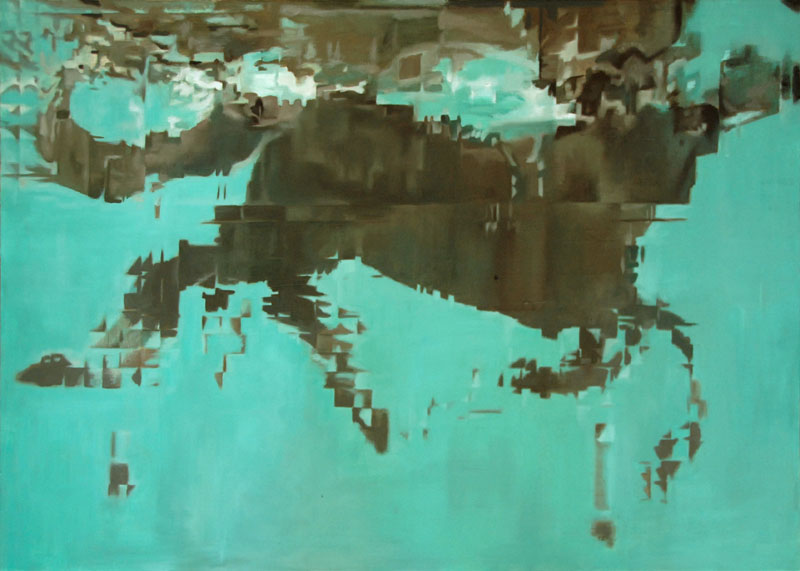Friday, June 8, 2012
Ugly Renaissance Babies-the kids Aren't AlRight
Tuesday, February 7, 2012
Imperfection
Saturday, January 7, 2012
Labyrinth of Living Exhibits
A lively panel discussion followed the performances. Aaron Williamson opened the discussion by explaining his curation of the performances, explaining his interest in the responses of artists who are “set apart from the norm” through illness or medical prognosis.
You can watch video recordings of the full panel discussion here.
Wednesday, December 28, 2011
Louis Wain's disorder and his fractal patterns
Thursday, December 15, 2011
From Head To Sky

This initiative was born as part of the Discrimination Awareness project financed by the European Social Fund. The project aims to give people considered “different” the chance to share their experiences through their own intimate and personal stories, in the firm belief that awareness is an essential condition for all forms of integration and mutual acceptance among individuals. This initiative began thanks to one person’s desire to tell his story – a person doubly discriminated against, being both a foreigner and physically challenged. Other Discrimination Awareness activities have included conferences, concerts, book presentations, and talks with experts, as part of the Mother Earth program, a cultural initiative promoting respect, acceptance and harmony.
You can watch for free the documentary and its web version "Mahammed's journey"
Tuesday, December 6, 2011
Sigur Rós - Svefn-G-Englar
There is also a making of Svefn-G-Englar video you can download
Friday, August 26, 2011
13 Outsider Artists
Among them Judith Scott,
Thursday, August 11, 2011
Digital Distorted Paintings by Jens Jesse

Monday, August 1, 2011
Eyeball Replacement with Webcam
Glitch Artwork at Google Books
Saturday, July 2, 2011
Pam et Jenny’s de Design Graphique Bruxelles
Francoise Gamma's Animated gif's
Thursday, April 14, 2011
Disability Aesthetics and Politics
"Every image, every word that does not fit within the general consensus of what is considered socially acceptable, is excluded, deleted, literally removed from sight. The result? Cultural flatness: Productions, exhibitions, that are easily digestible, to the taste of a wider public and described by the majority as being ‘beautiful’.
Is this true beauty? No. But it does teach us something about the general view on ‘beauty’. It thus could have something to do with being proper, acceptable,…This is where the relation between ‘the good’ and ‘the beautiful’ comes into play. It also clearly ascertains that there are standards, generally accepted amongst the majority of people, for what is considered ‘beautiful’. Even though it is true that this only applies when these people have also been brought up with the same rules about what beauty is. Because beauty is of course culturally and socially determined. A Chinese person has other ideas about a beautiful vase as does one from African descent. Kitsch is beautiful to the art lover as long as it’s from Jeff Koons or one of his followers. For a “similar” statuette on the mantel of the retired laborer he shows only disdain."
Thursday, March 31, 2011
Specimens and Superhumans
Specimens to Superhumans is a series of events curated by The Arts Catalyst and Shape exploring contemporary issues around biomedical science, disability and ethics, and how these are explored, represented and critiqued in art.
The events provide creative opportunities to show the work of and to provide mentoring, development and networking opportunities for disabled artists. The series hopes to identify and nurture artists who could participate in future programmes, with the long-term aim of commissioning a series of new artists’ projects.
Labyrinth of Living Exhibits, Hunterian Museum, London 12 May 2011
Sunday, March 20, 2011
Bye Bye Kitty!!!-Between Heaven and Hell in Contemporary Japanese Art
What is also striking regarding the interests of this blog, is the inextricable relation of disability aesthetics and the ways that devastating disasters get into the realm of aesthetics (although this is might not be a very clear example). The relation of disability aesthetics and the introduction of any disaster into an analysis of its aesthetic impact seems to be one of the most controversial subject matters of disability aesthetics and needs a lot more close and careful examination or study.
Tuesday, February 22, 2011
"Photo Opportunities" by Corinne Vionnet
Corinne Vionnet explains "...These pictures are on the Internet, to be seen by any eventual visitors. I am just one of those visitors. It is the sheer quantity of these almost identical pictures that gave me the idea of superimposing them. I do not think I would have had the idea if I had made all these pictures of the same places myself. Anyway, the work would loose its meaning."
via flavorwire & mymodernmet
Tuesday, February 15, 2011
"Tactile Mind" book by Lisa J. Murphy








